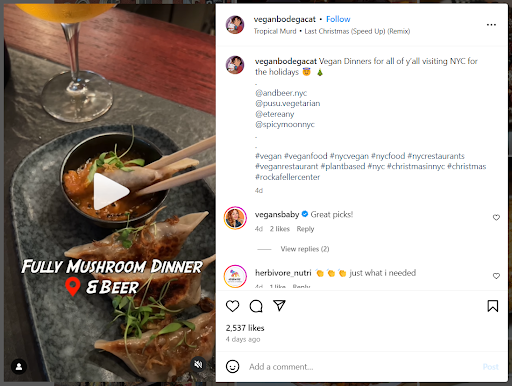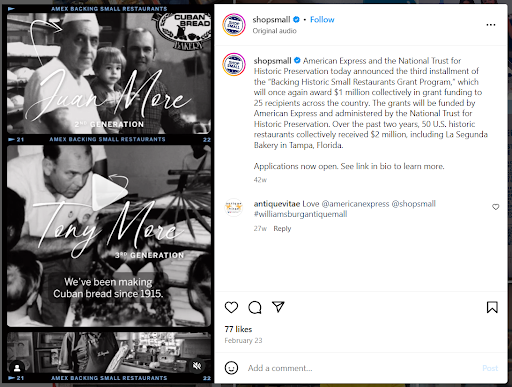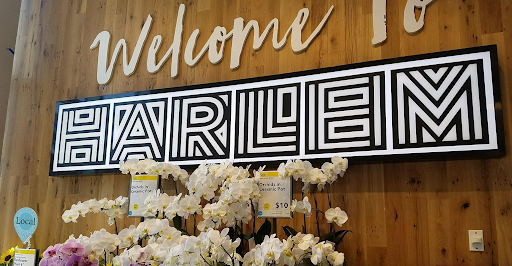We live in the era of digital globalization when you can market your products to people all over the world with relative ease.
But, surprisingly, this globalization has not affected people’s habits of giving preference to products and services from their local communities.
So, it has become increasingly important for you to position your product as a local one too to take advantage of this habit.
What is hyperlocal social media marketing?
I think the term hyperlocal can help us better understand the nature of this marketing strategy. Unlike your regular marketing campaigns that target people all over the country (or even worldwide), hyperlocal marketing is about appealing to small local communities.
By understanding the needs of people in specific towns and areas, you can tailor your strategy and content to them in a way that your products and brand look way more appealing than what your competition can offer.
And social media is the best vessel to carry your strategy considering the increased online engagement of residents with channels, groups, and hashtags that represent their community.
Now, let me further elaborate on the importance of implementing a local social media strategy by going over some of the benefits that you can get from it.
Benefits of hyperlocal social media marketing for nationwide and local businesses
Say, how many times did you prefer the fresh bread from your local small bakery to the mass-produced ones covered in plastic wrap for a supermarket?
Yes, it might be due to the better quality of the smaller business’s fresh-baked treats, but that may be supported by a couple of other factors:
- Your desire to support a local business and add your two cents to the community
- The feeling that local is better even if you can also find items of equal quality in the supermarket
The way you prioritize local products and services is a rather common consumer behavior. In fact, around 74% of consumers give their preference to products available in their local community.
You can look at it as a potential challenge for large brands who usually run nationwide marketing and advertising campaigns. People will still give preference to the local products but it is better to look at this inherent human behavior as a massive opportunity to boost your sales and increase brand awareness.
How? By acting how local businesses do. This way, you can ensure that people treat you like a member of their community and give preference to your products the same way they do with local companies.
And to act like a local business, you will need to do your marketing locally too.
In terms of the marketing channel to choose for targeting locally, you might consider local SEO (search engine optimization) for people doing local searches on Google Maps or Google Search. Utilizing a local citation finder can also help ensure your business is listed accurately across various online directories, boosting your local SEO efforts.
However, in my opinion, social media is probably the best channel for local target markets. The reason is that SMM is the preferred channel of communication for local businesses (76% of them run SMM campaigns).
But which social media platform is the best choice for hyperlocal social media marketing campaigns (in terms of optimizing your key marketing metrics)? It depends. Let’s look at each major platform to find out.
Which social media platforms are the best for it?
Running your social media campaign on the right platform is probably as important as creating the right content for your posts. The reason is that people from different demographics and locations give preference to different platforms.
To reach the right audience effectively, you will need to identify the platform they use.
Apart from that, there are also platform-specific differences that you need to consider. Let me go over the three major social media sites and show you why these differences matter.
Instagram is among the best places to do hyperlocal social media marketing.
This platform comes with two handy features that can help you focus your content on people in specific communities:
- Geotagging: You can add location tags for a local business (assuming they have a business page for their local customers) in your posts and stories. When people click on the geotag, the platform will redirect them to your page. You can use this to promote one of your stores in the local community you are targeting.
- Local Hashtags: It is also a great idea to use one of the existing hashtags that the people in the community are actively browsing–making your content visible to your target location. For instance, if you promote your doughnut brand in New York, you can use the #NYCFood to appeal to locals in the city.
Here’s an example of businesses promoting their dishes using local hashtags:

Source: Instagram
In this example, a vegan-oriented page is promoting restaurants with vegan food. This campaign was quite popular both on Instagram and Pinterest. Platforms such as Pinterest can also serve as a way to reach a wider audience. Creating location specific content will narrow your reach but it’ll also ensure a higher engagement.
Make sure to embed your Instagram feed in your website to further the reach of your content.
Facebook is the better option for you if you want to target the mid-aged portion of your target audience.
Just like Instagram, this platform comes with a range of tools that let you narrow your reach and market hyper-locally. Some of these tools include:
- Geo-targeted Ads: Facebook’s advertising engine is capable of showing your content to people in specific cities and even neighborhoods–letting you further localize your campaigns.
- Facebook Groups: There are local groups where people from local communities gather and discuss different topics. It is quite common for local businesses to promote their products and services in such groups as well.
- Events: You can create a local event that promotes your brand and geo-target your events to specific cities and areas.
Facebook also used to have its own email service, but it quickly disappeared in the Outlook vs Gmail battle.
Here’s how local businesses use events for marketing:

Source: Facebook
The company in the screenshot is a training center that has created a local event inviting people interested in social media marketing to take their course.
TikTok
If Facebook is a good fit for the mid-aged audience, TikTok is your platform of choice when it comes to reaching younger folks.
TikTok also supports local hashtags and ads. However, its best feature for helping you promote locally is its sophisticated AI-driven algorithm for suggestions. TikTok’s “For You” page will use the geo-location of the user and start suggesting videos and ads that are specific to their country, city, and even the local area.
Moreover, the AI engine will also take into consideration the interests and preferences of each user to curate relevant content. This means that your videos and ads will reach only those people in the local community who are genuinely interested in the products and services that you provide.
Here’s what a typical Parisian user might be able to see in their TikTok feed:

Source: Tiktok
Sephora is among the most active users of hyperlocal marketing in Europe. In this campaign, they have partnered with local influencers to promote their brick and mortar stores in Paris.
To conclude, no matter your use case (hyperlocal marketing or even using them like a contact center) each site comes with its advantages in terms of targeting locally. But your choice of a platform is only part of the overarching hyperlocal strategy. So, let’s look at other elements too.
Hyperlocal social media marketing strategies for targeting your local market
Traditionally, when I talk about strategies for different marketing channels, I prefer showcasing the well-tried approach of “research-publish-measure-repeat”. Although it applies to hyperlocal social media marketing, the strategies for this channel will be a bit different considering its nature.
So, let’s cover the strategies I suggest you try.
Understand the demographics and needs of your local audience
This is the “research” phase of the classical approach I talked about. No matter what kind of marketing campaign you run, you should learn about your audience first.
In the case of hyperlocal SMM, of course, you need to learn about the needs of the people living and working in that specific geographic area.
Researching locally is important as the behaviors and pains of people will differ depending on their location. For instance, the food preferences of people in Milan will be significantly different from those living in Sicily.
You can personally nearly anything that is related to communicating with your audience, even your out of office template.
So, if you use the internet for research, make sure that you filter and review the data for your local community only. If you happen to live in that area, then I encourage you to get out of the building and talk to locals.
Consider using local hashtags and geotags
As you have seen, nearly all major social media channels offer you at least one or two geo-targeting features.
Whether it is the AI geographical suggestion algorithm of TikTok or the local hashtags or Geotags on Facebook and Instagram, you should take advantage of them.
This way, instead of your local-tailored content reaching irrelevant audiences, you will get them to the people who reside in your target area and will be genuinely interested in your offer.
Tailor your content to the local audience
Content personalization is king! This rule applies to hyperlocal marketing too.
In your content and copy, make sure that your readers understand that you are a local and the products and services are available in their area too (just like the way you format an email for locals).
One of the easy ways is to use the name of the city/neighborhood in your copy. If you have a local shop/office, then you should mention it too (including its address).
Try local video testimonials
You probably already know how valuable testimonials are. You probably even have a couple of them on your landing pages.
But how about doing testimonials locally? This is another way of creating a sense of trust in your brand among the local community members. As soon as people see a testimonial from a person they know personally (and people usually know everyone in their local communities), they will be very likely to trust that product.
Moreover, you can consider creating local video testimonials as video content is much better at conveying the information than plain text.
Build partnerships with local influencers
Every community or city has its local celebrities that people admire and trust. They are usually influencers with smaller audiences. But it is actually a benefit and not a downside.
- These small audiences mainly consist of locals who you are aiming to target.
- The followers of small influencers are usually far more engaged with their content.
Thanks to collaborations with local influencers, you can take advantage of their reach and authority to promote your products and build trust in your brand.
Improve local community engagement by hosting local events
We already talked about the Events feature on Facebook and how you can use it to promote your brand.
But, it does not necessarily have to be an online event. Why not rent a space and organize a physical one? This way you can treat your local audience and become a beloved member of the community.
Moreover, this is a great chance to meet your audience, talk to them, and learn about their needs and problems.
Bonus: Hyperlocal advertising
So far, we have talked about the social media marketing side of hyperlocal promotions. But there are also social media ads that you can use to target locals. Just like regular local posts, these ads will perform better and get more out of your ad spend.
All the major social media platforms have the option to target specific locations (cities, zip codes, and neighborhoods) with your ad campaigns.
Just make sure that the ad copy is tailored to local audiences.
To sum up, your hyperlocal media strategy will revolve around understanding locals and targeting their geographic area. Now, let’s shift from theory to practice and see how some of the prominent brands have implemented their hyperlocal social media strategies.
Hyperlocal social media strategy examples from famous brands
Considering the many benefits of targeting locally, this strategy has become a favorite for many famous brands out there.
Here are three of these that stand out of the bunch with their creative approaches to local digital marketing:
American Express
To target local potential customers, American Express launched the “Shop Small” initiative as part of the larger “Small Business Saturday” campaign.
To encourage people to shop at their local businesses (using Amex cards, of course), the company started highlighting the stories of local shops and services and promoting their products. Moreover, they helped these businesses with their marketing efforts by providing materials and expertise.
Here’s how they helped a Florida bakery that sells authentic Cuban sandwiches:

Source: Instagram
People all over social media loved the “Shop Small” campaign as they saw American Express as a brand that cares about small family-owned businesses and wants to help them grow.
Whole Foods Market
The opening of the Whole Foods Harlem store in NYC is another example of hyperlocal marketing done right.
Before they started the work on renovating the space for their physical store, the folks at Whole Foods met with Harlem residents and learned about their needs and interests.
This was a series of personalized messages including everything from the way they reached out to residents to how they told someone to keep in touch personally.
As a result, they made sure that the store was selling goods produced by local Harlem businesses. Moreover, they included Harlem-specific elements in their interior design to celebrate the rich history and culture of the famous NYC neighborhood.

Photo Credit: Jon Springer
Harlem residents soon actively talked about this campaign on social media with user-generated content like local video testimonials–calling the Whole Foods store an inseparable part of their community.
Domino's Pizza
To appeal to local communities, the famous pizza chain employed an interesting approach. Instead of targeting their products and services to certain cities or areas, they decided to win the hearts of their prospective customers by helping them restore their communities.
They launched the “Paving for Pizza” campaign that would pave the roads with potholes for different small towns across the United States. Residents would nominate their community using an online form and Domino’s would fund the repair work of the potholes there.
As a marketing trick, they would then add their logo on the fixed pothole with the phrase “Oh yes, we did”. Here’s what these potholes looked like.

Image Credit: City of Milford
Of course, Domino’s Pizza would actively promote this campaign and its results on its social media accounts–leading to a huge PR success.
Conclusion
Hyperlocal social media marketing is an excellent content marketing strategy to reach out to your target users by taking advantage of their sense of community. With the help of a well-targeted local campaign, you can significantly boost your sales or improve your brand visibility (or both).
So, why not apply the knowledge you have just gained about this channel and run your own local campaign?